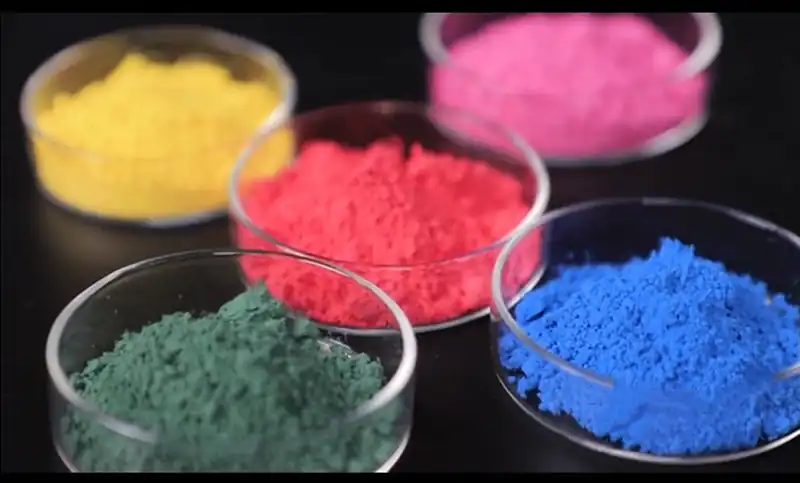Messi Biology states that Magnesium Oxide (MgO) plays a crucial role in thermochromic coatings, especially in a class of heat-sensitive color-changing coatings based on reversible inorganic salt reactions. The core of its application lies in utilizing the reversible adsorption/desorption process of magnesium oxide at specific temperatures, leading to a significant color change in the coating. As a core component, magnesium oxide triggers a color/decoloration reaction with cobalt salts through its surface’s reversible adsorption/desorption behavior of water molecules and carbon dioxide during heating/cooling, thereby achieving reversible color changes in the thermochromic coating. This inorganic salt-based system, due to its cost, safety, and reversibility, has significant practical value in temperature monitoring indication fields, especially in applications that do not require high accuracy but need low-cost, reversible indication. The activity and particle size of magnesium oxide in the formulation, as well as its compatibility with cobalt salts and resins, are key technical control points.

Main Applications and Mechanism of Action of Magnesium Oxide in Thermochromic Coatings:
- As a Main Color-Changing Component:These thermochromic coatings typically consist of magnesium oxide, cobalt chloride (or other cobalt salts), and a resin binder/solvent.Color Change Mechanism:
- Low Temperature/Normal State: Magnesium oxide is hygroscopic and can slowly react with carbon dioxide in the air to form basic magnesium carbonate. In this state, magnesium oxide/basic magnesium carbonate appears white or light-colored.
- Heating: When the temperature rises to a specific threshold (usually between 40°C and 70°C, depending on the formulation and particle size), magnesium oxide or the basic magnesium carbonate formed on its surface undergoes decomposition or desorption reactions. More importantly, heat drives off water molecules or weakly bound CO₂ adsorbed on the surface of magnesium oxide, exposing a fresh, highly active surface of magnesium oxide.
- Color Development: The exposed high-activity magnesium oxide surface has strong nucleophilicity and can react with cobalt chloride present in the formula to form a blue cobalt-magnesium complex (or similar compound). This process may also involve hydrolysis or changes in the complexation state of cobalt ions. Therefore, the coating color changes from white/light-colored to blue or blue-purple.
- Cooling: When the temperature decreases, the surface of magnesium oxide re-adsorbs moisture and carbon dioxide from the air, gradually restoring the formation of basic magnesium carbonate or a hydrated layer, disrupting the blue complex with cobalt (or making it unstable), causing the color to reversibly fade back to the original white/light-colored. This recovery process may take minutes to tens of minutes, depending on ambient humidity.
- Key Characteristics and Functions:
- Thermochromic Trigger: Changes in the physicochemical state (adsorption/desorption) of the magnesium oxide surface are the direct driving force for color change.
- Provides Reaction Sites: Its surface is the site for forming the blue color-developing complex.
- Determines Color Change Temperature: The particle size, purity, and pretreatment method (such as calcination temperature) of magnesium oxide have a significant impact on its specific surface area and surface activity, which directly affects the color change starting temperature and sensitivity. The smaller the particle size and the larger the specific surface area, the lower the color change temperature and the more sensitive it is.
- Reversibility: Its reversible hygroscopicity and reaction with CO₂ ensure the reversible color change of the coating.
- Low Cost: Compared to some organic thermochromic materials, magnesium oxide is reasonably priced.
- Formulation and Process Key Points:
- Ratio Control: The ratio of magnesium oxide to cobalt chloride needs to be precisely optimized to achieve the best color change contrast and stability.
- Particle Size Selection: Usually, highly active, lightweight magnesium oxide in the micron or even sub-micron range is selected.
- Binder Selection: The resin binder (such as acrylic resin, nitrocellulose, ethyl cellulose and other solvent-based resins, or specific water-based resins) needs to be compatible with inorganic pigments, provide adhesion and film-forming properties, and at the same time not hinder the diffusion of gases (water vapor, CO₂). Hydrophilic systems are more likely to achieve rapid reversible changes.
- Solvents: Commonly used alcohols (ethanol, isopropanol) or ester solvents.
- Additives: Fillers (such as barium sulfate) may be added to adjust rheology, opacity, and cost; stabilizers are added to extend service life; and hydrophobic agents are added to adjust the response speed (but may affect reversibility).
- Coating: Usually made into inks or coatings, and applied to substrates such as paper, plastic film, or metal foil by screen printing, spraying, knife coating, or other methods.
